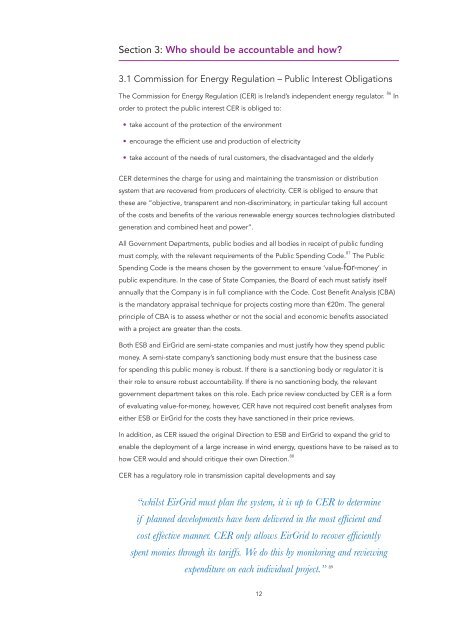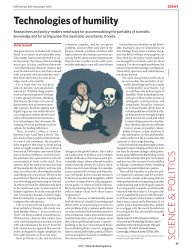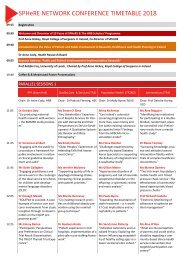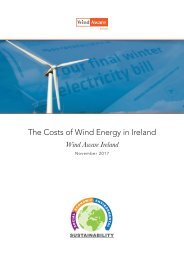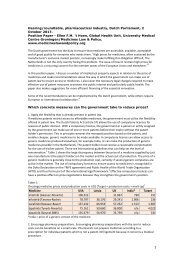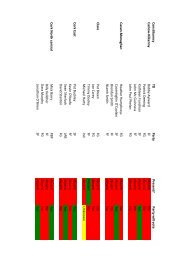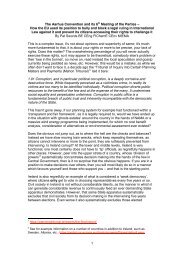Costs of Wind Energy Report
You also want an ePaper? Increase the reach of your titles
YUMPU automatically turns print PDFs into web optimized ePapers that Google loves.
Section 3: Who should be accountable and how?<br />
3.1 Commission for <strong>Energy</strong> Regulation – Public Interest Obligations<br />
The Commission for <strong>Energy</strong> Regulation (CER) is Ireland’s independent energy regulator. 86 In<br />
order to protect the public interest CER is obliged to:<br />
• take account <strong>of</strong> the protection <strong>of</strong> the environment<br />
• encourage the efficient use and production <strong>of</strong> electricity<br />
• take account <strong>of</strong> the needs <strong>of</strong> rural customers, the disadvantaged and the elderly<br />
CER determines the charge for using and maintaining the transmission or distribution<br />
system that are recovered from producers <strong>of</strong> electricity. CER is obliged to ensure that<br />
these are “objective, transparent and non-discriminatory, in particular taking full account<br />
<strong>of</strong> the costs and benefits <strong>of</strong> the various renewable energy sources technologies distributed<br />
generation and combined heat and power”.<br />
All Government Departments, public bodies and all bodies in receipt <strong>of</strong> public funding<br />
must comply, with the relevant requirements <strong>of</strong> the Public Spending Code. 87 The Public<br />
Spending Code is the means chosen by the government to ensure ‘value-for-money’ in<br />
public expenditure. In the case <strong>of</strong> State Companies, the Board <strong>of</strong> each must satisfy itself<br />
annually that the Company is in full compliance with the Code. Cost Benefit Analysis (CBA)<br />
is the mandatory appraisal technique for projects costing more than €20m. The general<br />
principle <strong>of</strong> CBA is to assess whether or not the social and economic benefits associated<br />
with a project are greater than the costs.<br />
Both ESB and EirGrid are semi-state companies and must justify how they spend public<br />
money. A semi-state company’s sanctioning body must ensure that the business case<br />
for spending this public money is robust. If there is a sanctioning body or regulator it is<br />
their role to ensure robust accountability. If there is no sanctioning body, the relevant<br />
government department takes on this role. Each price review conducted by CER is a form<br />
<strong>of</strong> evaluating value-for-money, however, CER have not required cost benefit analyses from<br />
either ESB or EirGrid for the costs they have sanctioned in their price reviews.<br />
In addition, as CER issued the original Direction to ESB and EirGrid to expand the grid to<br />
enable the deployment <strong>of</strong> a large increase in wind energy, questions have to be raised as to<br />
how CER would and should critique their own Direction. 88<br />
CER has a regulatory role in transmission capital developments and say<br />
“whilst EirGrid must plan the system, it is up to CER to determine<br />
if planned developments have been delivered in the most efficient and<br />
cost effective manner. CER only allows EirGrid to recover efficiently<br />
spent monies through its tariffs. We do this by monitoring and reviewing<br />
expenditure on each individual project.” 89<br />
12


